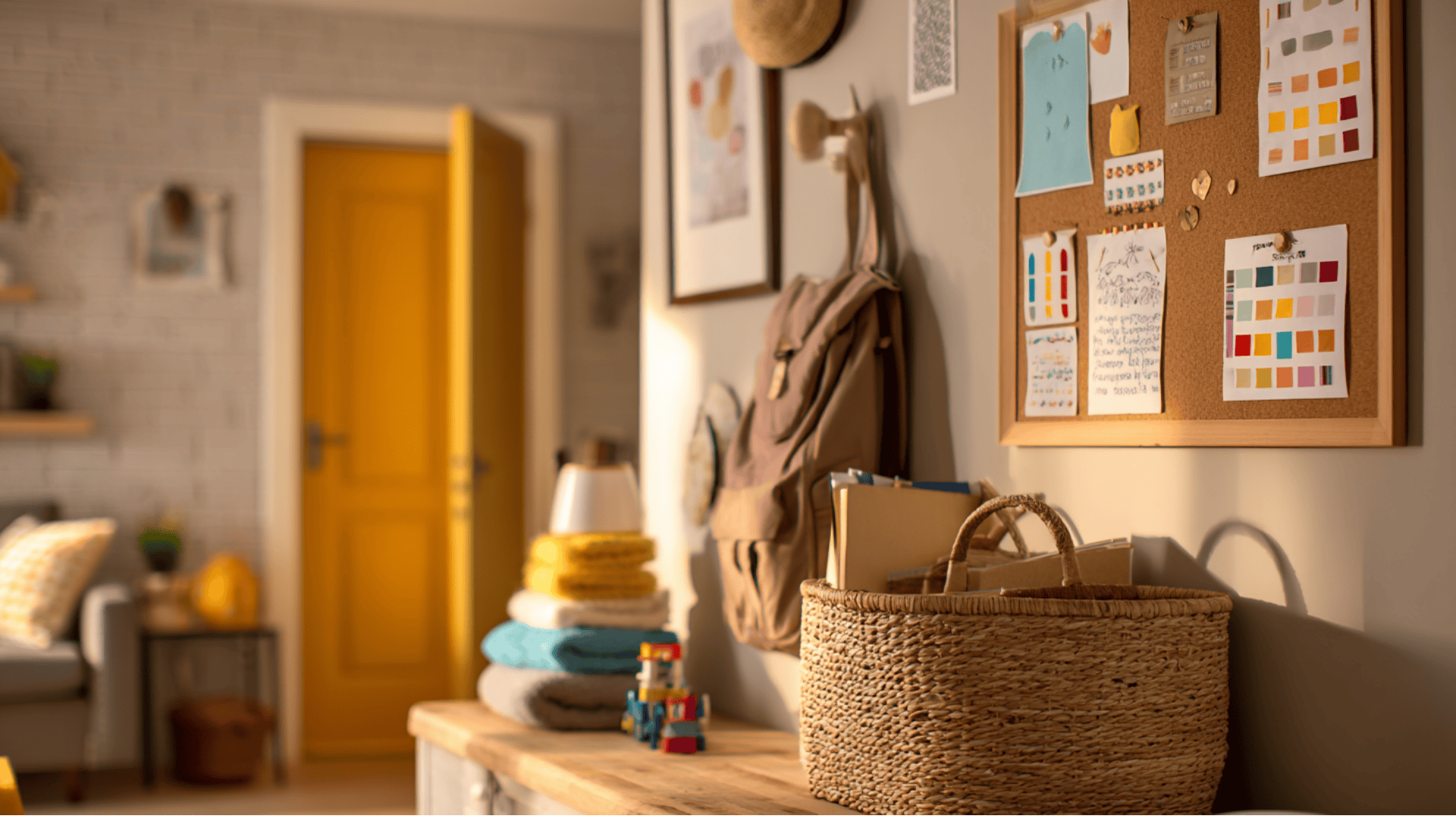As a parent, I know how tricky it can feel to set rules at home without turning every day into a power struggle.
You want your kids to listen, but you also want them to feel respected and responsible. That’s where house rules for kids come in.
In this blog, we’ll go over what house rules are, why families need them, and the different types that work for all ages.
I’ll also share examples for young kids, school-age children, and teens, plus tips on how to make rules stick with rewards and consequences. By the end, you’ll have a clear, simple plan to create rules that actually work in your home.
What are House Rules for Kids?
House rules are simple guidelines that tell kids what is expected at home. They explain how to behave, how to treat others, and how to take care of their things.
Families need house rules because they bring order and make life run more smoothly. Rules give kids clear boundaries and help them feel secure. They also show kids that everyone has responsibilities.
With rules, children learn important values. They understand safety by knowing what’s not allowed. They practice responsibility by helping at home. And they build respect by treating family members kindly.
Types of House Rules for Kids
In every home, rules look a little different. What works in my house might not be exactly what you use in yours, and that’s okay.
Still, most rules for kids fall into a few clear types, and each one plays a role in teaching values and keeping life running smoothly.
| Rule Type | What It Teaches Kids | Why It Matters |
|---|---|---|
| Personal Responsibility | Caring for their things and helping at home | Builds independence and shows everyone has a role |
| Respect & Manners | Kindness, politeness, and listening to others | Creates a home where everyone feels valued |
| Safety Rules | Knowing boundaries and making safe choices | Protects kids from harm and gives parents peace of mind |
| Daily Routines | Following daily habits and structure | Reduces arguments, builds healthy habits, and makes life predictable |
| Moral Rules | Honesty, fairness, and responsibility | Guides kids toward good choices and respectful behavior |
At the end of the day, these types of rules work together to give kids balance. Some help them stay safe, others help them get along, and all of them prepare them for the bigger world outside your home.
List of House Rules That Work

Different ages call for different rules. What works for a preschooler may not always work for a teenager. Here is the list of rules parents often use:
House Rules for Young Kids (Ages 3–7)
These early rules keep life calmer and help kids learn routines.
- Toys get picked up before bed. Leaving toys out makes the room messy and unsafe. Picking them up teaches kids to take care of their things.
- Gentle hands, gentle words. When you’re upset, talk about it instead of hitting or shouting. Kind actions and words keep everyone feeling safe.
- Wash before you eat. Clean hands before meals prevent germs and sticky messes. It’s a simple step that becomes a healthy habit.
- Stay where I can see you. When we’re outside, staying in sight helps me keep you safe. It also teaches you about boundaries.
- Ask before grabbing. If something doesn’t belong to you, always ask first. This rule builds respect for other people’s things.
House Rules for School-Age Kids (Ages 7–12)
These rules keep kids on track while giving them room to grow.
- Homework first, fun later. Schoolwork comes before games or screen time. It helps kids learn to prioritize and manage time better.
- Bedtime is bedtime. Sticking to bedtime means better rest and easier mornings. It also helps keep a steady routine on school days.
- No yelling to win. Arguing with shouting only makes things worse. Calm voices teach kids to solve problems respectfully.
- Check in before leaving. Before heading out of the yard or house, always ask first. Parents need to know where you are for safety.
- Help out daily. Setting the table or helping with dishes shows teamwork. When everyone pitches in, the home runs more smoothly.
House Rules for Teens (Ages 13+)
Rules like these remind teens that freedom comes with responsibility.
- Curfew counts. Coming home on time builds trust. It shows you can handle more freedom responsibly.
- No phones at dinner. Meals are for talking and connecting, not scrolling. This helps the family spend real time together.
- Take care of your own stuff. Laundry, chores, and your room are your responsibility. It teaches independence and accountability.
- Let us know your plans. Always share where you’re going and who you’re with. Clear communication builds trust and keeps you safe.
- Respect goes both ways. Even when you disagree, use calm words. Respect at home helps everyone feel heard and valued.
Rules That Apply to the Whole Family
The best house rules are the ones that grow with your family. They don’t have to be perfect or the same as everyone else’s. What matters most is that they are clear, fair, and followed by everyone in the home.
- Respect each other. No name-calling or put-downs are allowed. Speaking kindly makes home a place where everyone feels safe.
- Everyone helps out. Chores are shared so no one carries the whole load. When everyone helps, the work feels lighter.
- No devices at meals. Phones and tablets stay away during meals. This keeps the focus on conversation and family time.
- Knock first. Closed doors mean privacy, even for kids. Knocking shows respect for personal space.
- Talk it out. Shouting doesn’t solve problems. Talking calmly helps us understand each other better.
Family-wide rules set the tone for the house and show that respect works both ways.
Guidelines for Setting House Rules
House rules don’t need to be complicated. They should make daily life smoother and easier for everyone. The best rules are short, clear, and age-appropriate.
Young kids need very simple directions, while older kids can handle more detail. It also helps to involve children in setting rules, since they’re more likely to follow what they helped create.
Use positive wording so kids know exactly what to do. For example, “walk inside” works better than “don’t run.”
Be consistent with enforcement, because rules only matter if they’re followed every time. Finally, allow flexibility as kids grow.
Rules should change as children become more responsible. Clear, fair rules that adjust over time are the ones that work best.
At the end of the day, rules work best when they feel fair. Keep them clear, stick with them, and show kids that you’re willing to adjust as they grow. That balance makes a big difference.
Ways to Implement House Rules

Rules work best when they are easy to follow and part of everyday life. The way you set them up can make all the difference in how kids respond. A few are listed below:
- Family rule board or poster: Keep rules visible so everyone remembers them.
- Daily checklists for younger kids: Simple charts help track routines like cleaning up or handwashing.
- Reward systems: Stickers, extra playtime, or small privileges show that good behavior is noticed.
- Family meetings: Review rules together with school-age kids to get their input and cooperation.
- Trust and consequences for teens: Clear rules paired with open conversations build accountability.
- Natural consequences: Let kids face the results of their choices instead of adding punishment.
- Revisit and update rules: Adjust rules as children grow and take on more responsibility.
When rules are clear, consistent, and flexible, they become part of the home’s routine. That’s when they truly help the family run smoothly.
Consequences & Rewards
Rules work best when kids know what happens if they follow them or break them. Below is some practical ways to handle it:
| Approach | How It Works | Why It Helps |
|---|---|---|
| Natural consequences | Kids experience the result of their actions. Example: if homework isn’t done, they face the teacher at school. | Teaches responsibility without added conflict. |
| Reward systems | Use stickers, extra playtime, or small privileges to recognize good behavior. | Motivates kids and shows that positive actions are noticed. |
| Calm rule enforcement | Stay calm, explain what happened, remind them of the rule, and follow through. | Keeps discipline fair and reduces power struggles. |
When rewards and consequences are clear and consistent, kids see rules as a way to learn—not just something to fight against.
Common Mistakes to Avoid
Even well-meaning rules can backfire if they’re not handled the right way. Here are a few common mistakes that can make house rules less effective:
- Having too many rules at once: Too many expectations overwhelm kids and make them harder to follow.
- Being inconsistent with enforcement: If rules only matter sometimes, kids won’t take them seriously.
- Setting rules without explanation: Children need to know why a rule exists to respect it.
- Not following the rules as parents: Kids notice what you do. If you don’t follow the rules, they won’t either.
Avoiding these mistakes keeps rules simple, fair, and easier for the whole family to stick with.
Final Thoughts
House rules for kids don’t have to be complicated. I’ve found that the simplest ones, like cleaning up, showing respect, and following routines, make the biggest difference at home.
When you set clear rules, it gives your kids boundaries, safety, and a sense of responsibility. And when you follow those same rules as parents, kids see that respect goes both ways.
The best part is that rules can grow and change as your family does. Start small, stay consistent, and involve your kids in the process. You’ll see how much smoother daily life feels.
What rules work best in your home? I’d love to hear your thoughts and experiences in the comments!
Frequently Asked Questions
How many rules should kids have?
Keep the list short and realistic. Young kids do well with 3-5 rules, school-age children can handle 5-7, and teens usually manage 6-8 clear rules.
How do I get my kids involved in setting house rules?
Call a quick family meeting, listen to their ideas, and agree on a few rules together. Involving kids builds cooperation and makes them more likely to follow.
What’s the best way to introduce new rules without pushback?
Be clear about why the rule matters, start with one change at a time, and stay consistent. This helps kids adjust gradually without feeling overwhelmed.
Should consequences be the same for every child?
Not always. Keep consequences fair but adjust them to fit each child’s age and maturity. Older kids can handle more responsibility and stronger accountability than younger ones.











